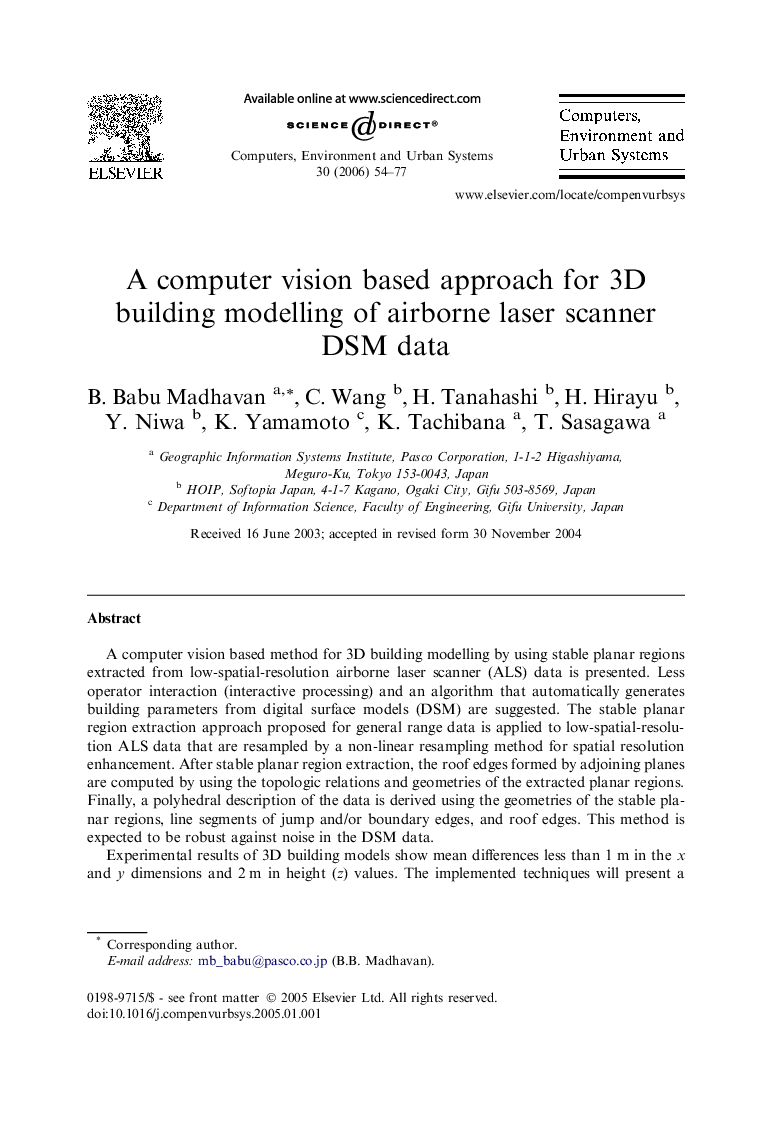| Article ID | Journal | Published Year | Pages | File Type |
|---|---|---|---|---|
| 506606 | Computers, Environment and Urban Systems | 2006 | 24 Pages |
A computer vision based method for 3D building modelling by using stable planar regions extracted from low-spatial-resolution airborne laser scanner (ALS) data is presented. Less operator interaction (interactive processing) and an algorithm that automatically generates building parameters from digital surface models (DSM) are suggested. The stable planar region extraction approach proposed for general range data is applied to low-spatial-resolution ALS data that are resampled by a non-linear resampling method for spatial resolution enhancement. After stable planar region extraction, the roof edges formed by adjoining planes are computed by using the topologic relations and geometries of the extracted planar regions. Finally, a polyhedral description of the data is derived using the geometries of the stable planar regions, line segments of jump and/or boundary edges, and roof edges. This method is expected to be robust against noise in the DSM data.Experimental results of 3D building models show mean differences less than 1 m in the x and y dimensions and 2 m in height (z) values. The implemented techniques will present a source of valuable automatic modelling of building structures in three-dimensions and will permit modelling of conventional and non-conventional roof surfaces faithfully.
